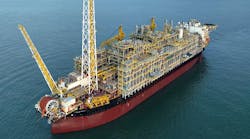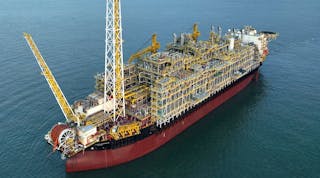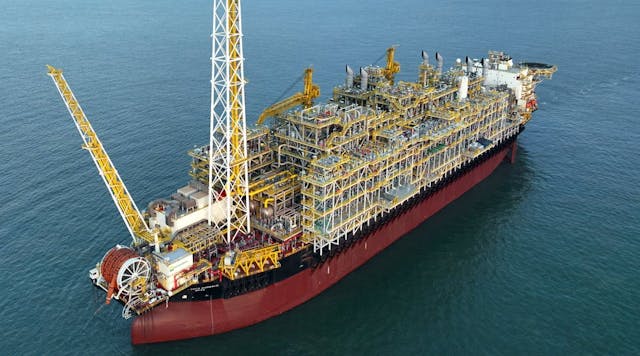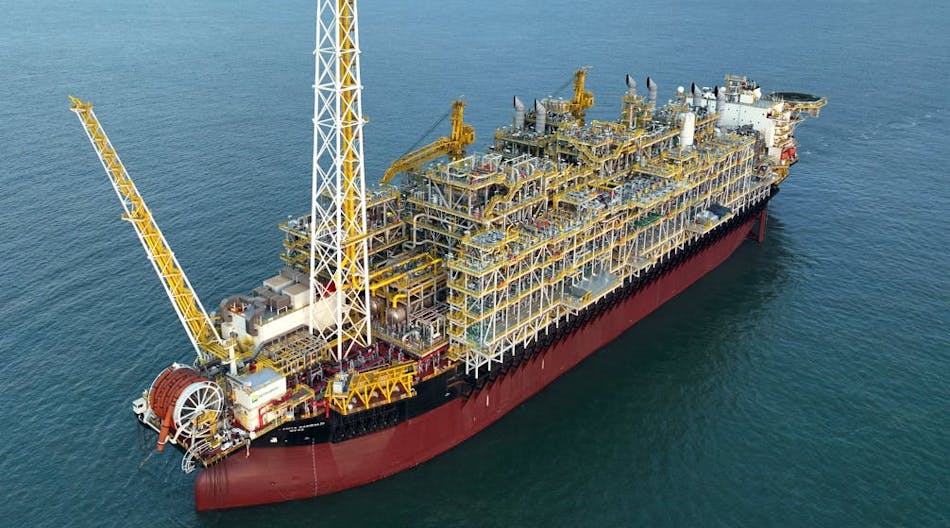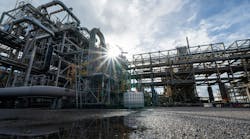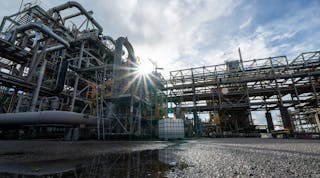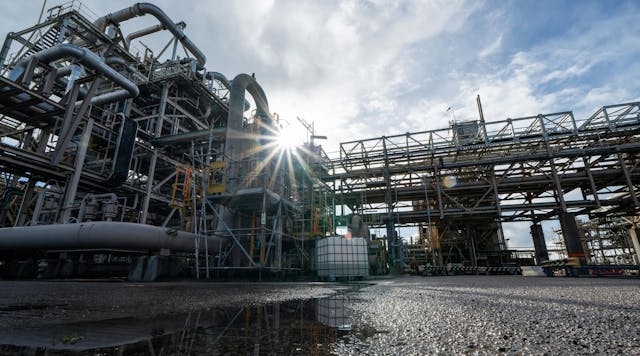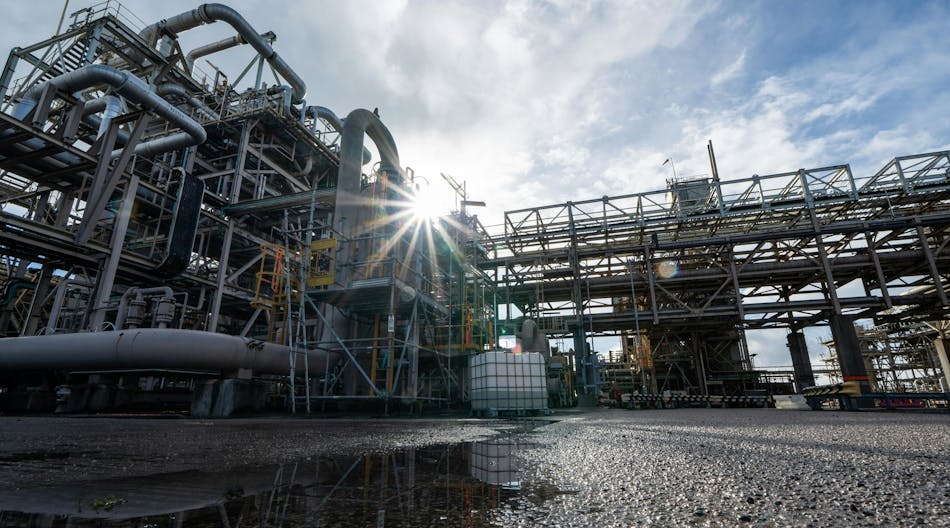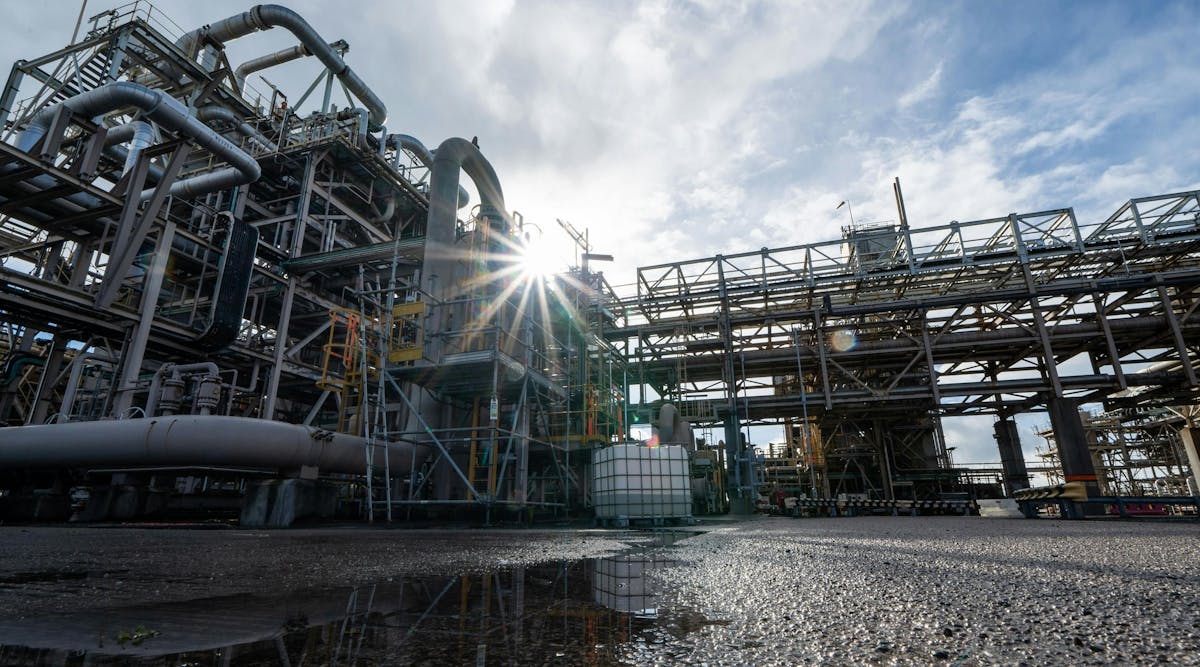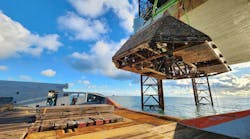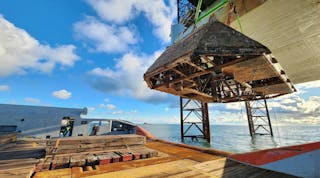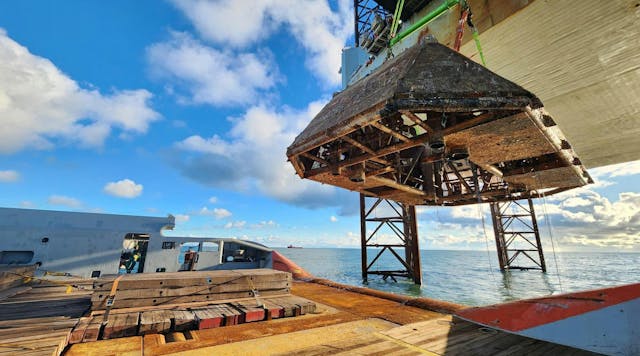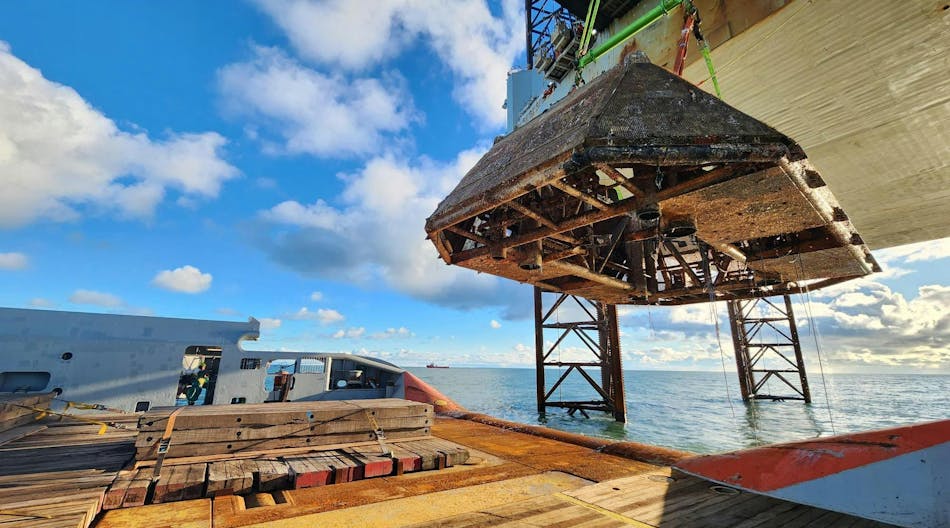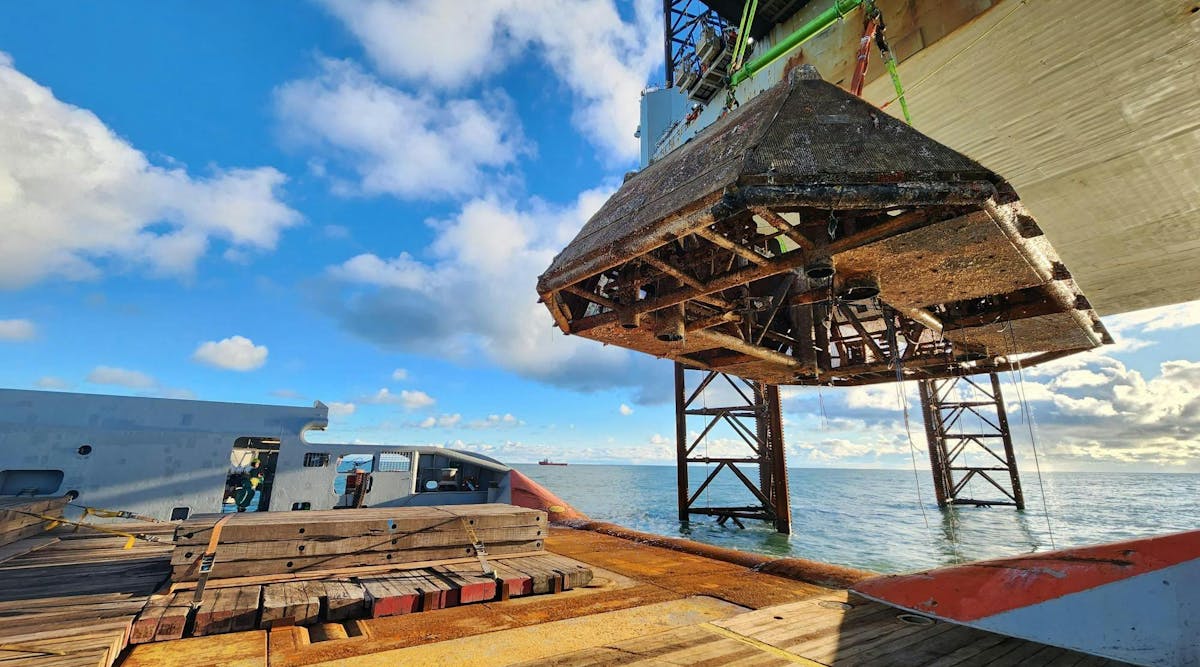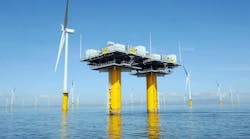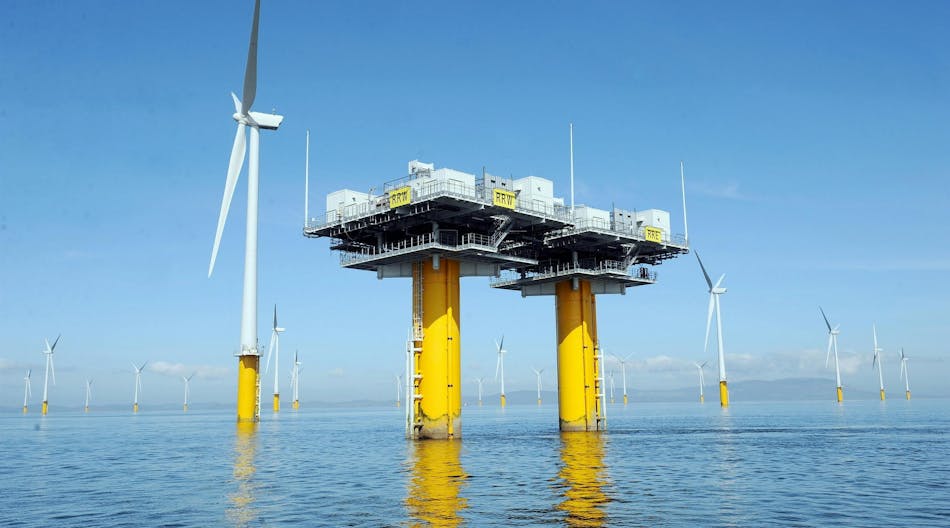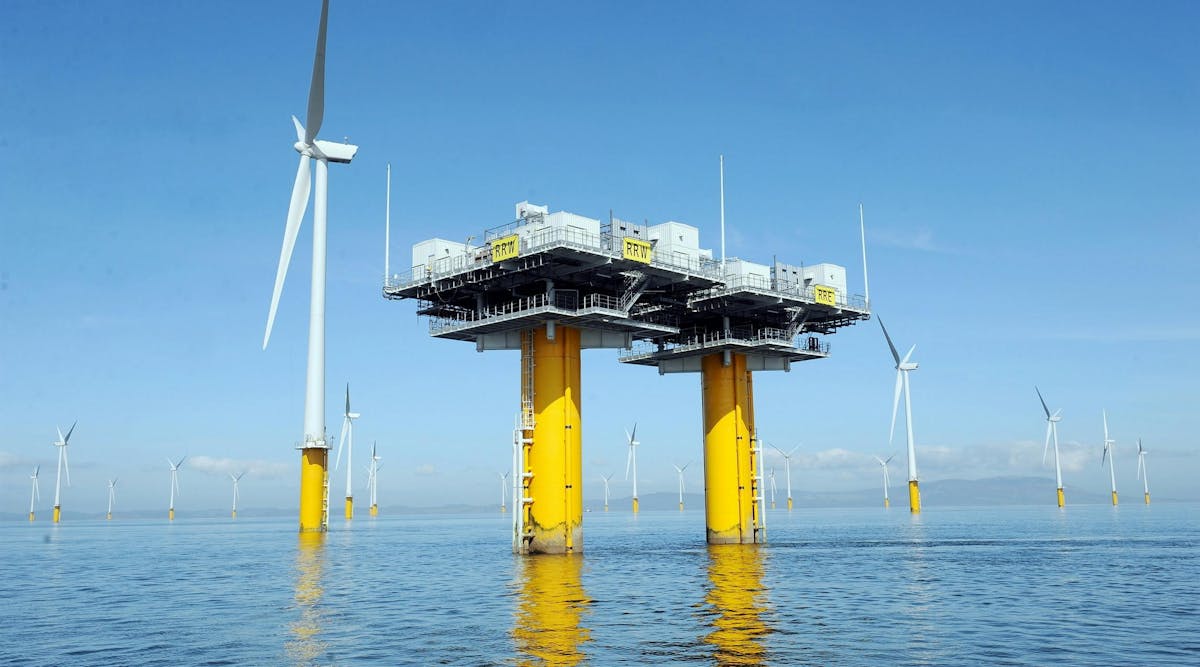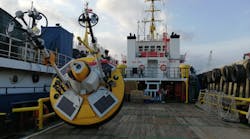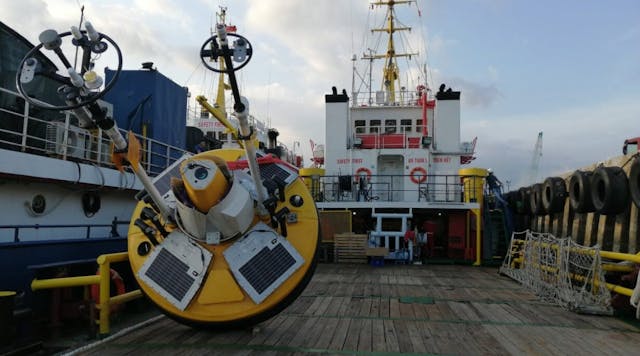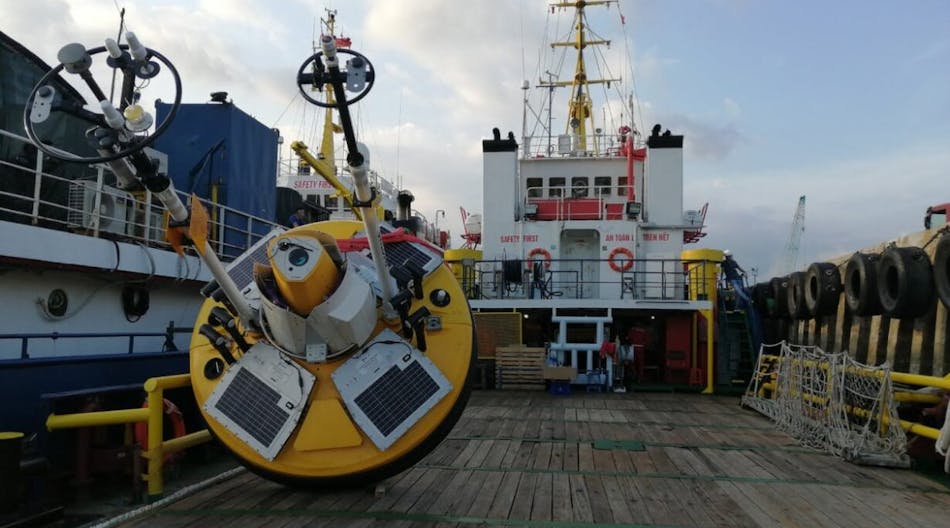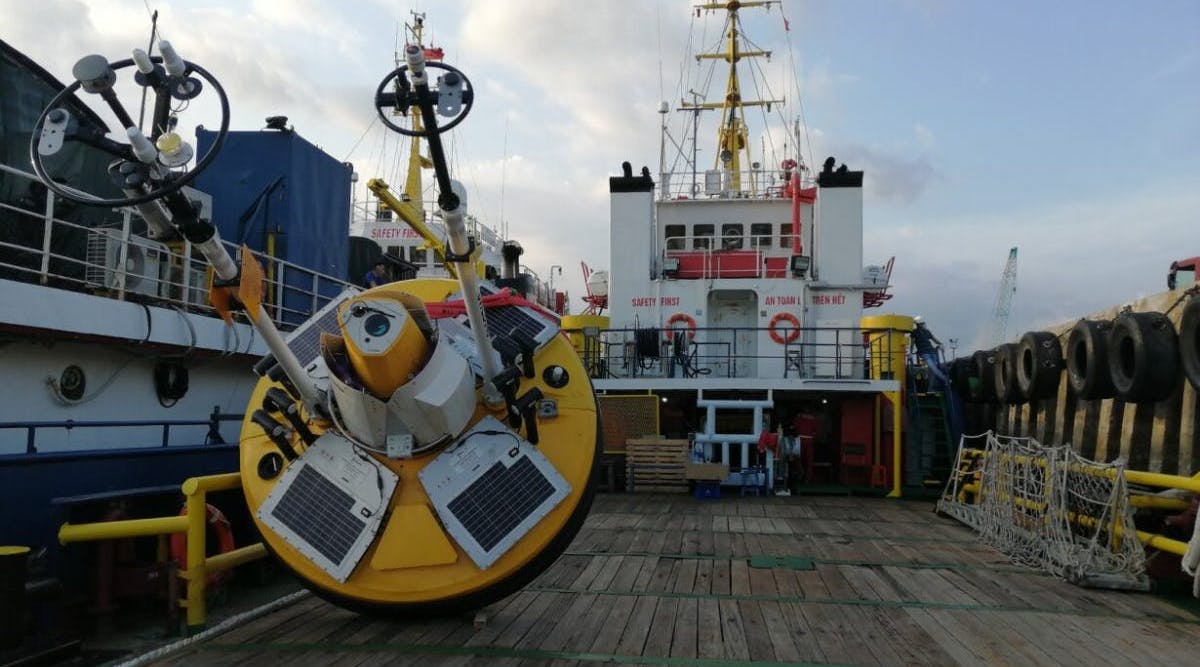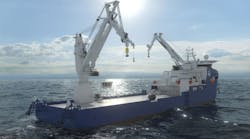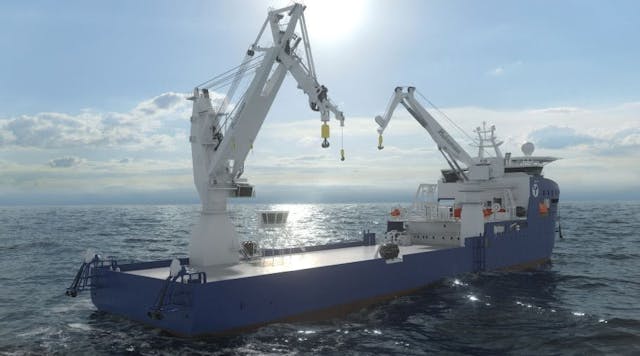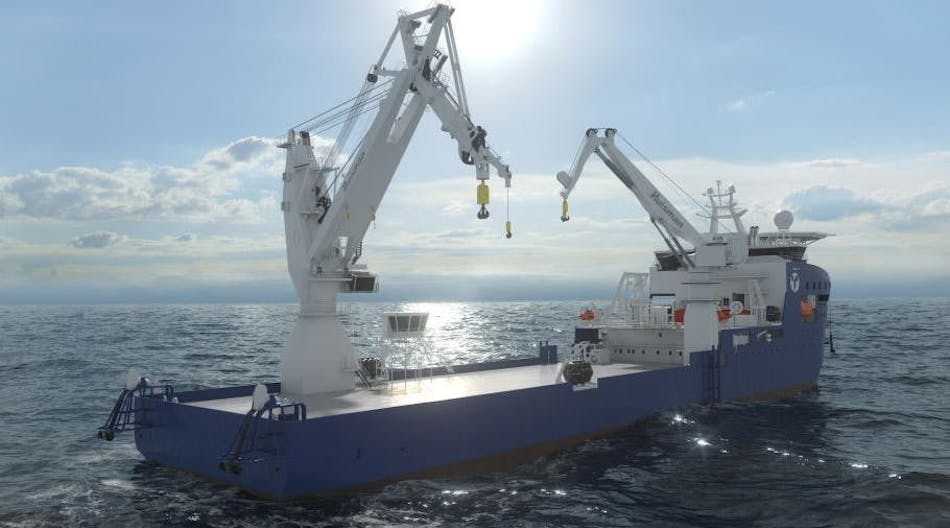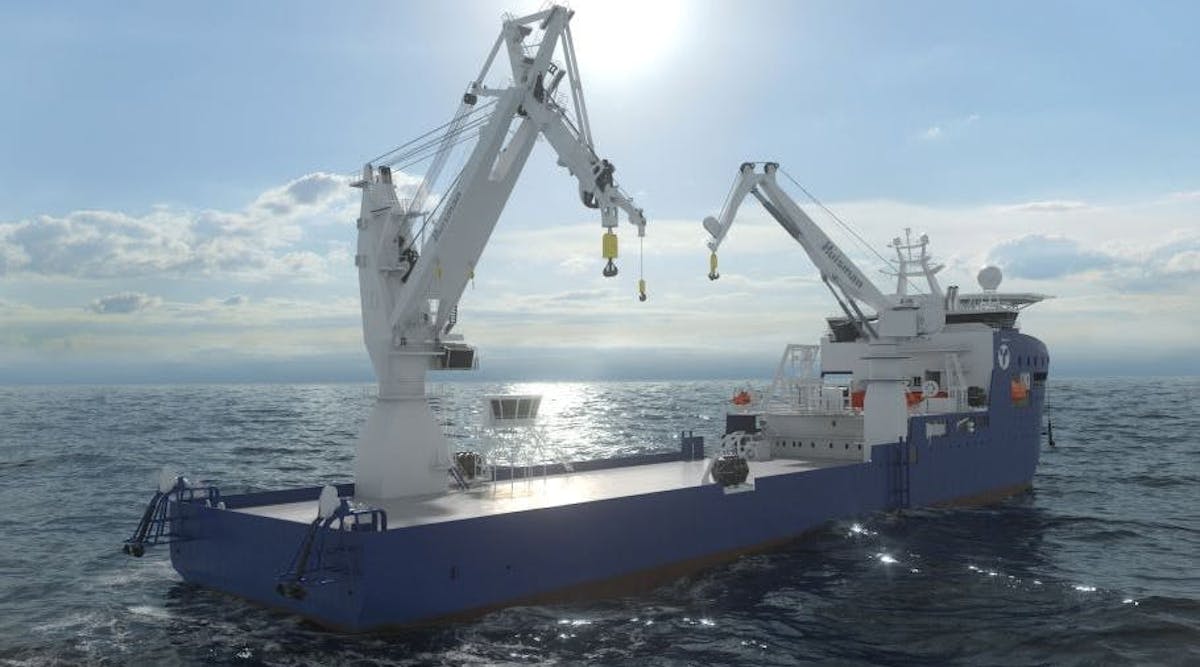编者注:本封面故事首次出现在《Offshore》杂志 2023 年 9 月/10 月号上。单击此处查看完整问题。
作者:Bruce Beaubouef,总编辑随着全球减排的要求,运营商正在迫切寻找“绿化”其生产平台的方法。特别关注计划部署在巴西近海的新型和即将推出的 FPSO。
实现这一结果的一些最有希望的途径包括重新审视发电技术,运营商正在寻求通过使用联合循环电力系统来“电气化”他们的系统,以及用所有的技术取代燃气轮机。 -电力驱动器和电机。在某些情况下,他们实际上正在扩大燃气轮机的规模以实现更高的效率,从而降低排放。
传统上,海上勘探与生产行业一直使用开式循环燃气轮机,因为它们操作简单、重量轻/占地面积小,并且成功使用的历史悠久。但其中许多涡轮机,尤其是较旧的涡轮机,是大量碳排放的来源。FPSO 消耗的大部分能量通常由伴生气提供,伴生气要么由燃气轮机消耗用于发电,要么用于机械驱动;或压缩用于加工、出口或再注入目的。所有这些系统都提供了减排的机会。但仅发电一项通常就代表了新一代 FPSO 60% 以上碳排放的来源,因此提供了最大的减排机会。
总体而言,新的和即将推出的 FPSO 减排策略可分为三种策略。一是采用更大、更高效的燃气轮机,从而提高上部功率密度并减少占地面积。这种选择可以提供经济和环境效益。第二种选择是部署电动电机压缩机作为(旧式)燃气轮机驱动压缩机的替代品,这也有助于减少排放,同时提高功率密度。这两种选择可以与联合循环燃气轮机结合使用,在某些条件下可以进一步提高效率并有助于降低生命周期成本。FPSO 的全面电气化可能会重点关注联合循环发电技术的使用。
为了研究这些选择,贝克休斯的一个团队最近开发了一个生命周期成本分析模型,以比较典型大型 FPSO(220 kbbl/d,87 MW 电力需求)的发电和压缩要求的替代配置。该模型既考虑了碳足迹/碳价格,也考虑了经济因素,即燃气成本。正如论文 OTC-32513 中所述,结果表明,从开式循环发电系统转向联合循环发电系统时,碳排放量可减少约 20%。研究还发现,更大、更高效的燃气轮机(>40 MW ISO)带来更多好处,即总体成本节省 10% 以上,特别是与开式循环效率相比。
贝克休斯将有机会在巴西近海实施其中一些设计举措。它最近赢得了 MODEC 的一份合同,为 Equinor 位于盐下坎波斯盆地的 BM-C-33 项目的 FPSO 提供联合循环技术。新技术预计将减少该项目的碳足迹。
该订单包括涡轮机械设备,包括 LM2500 燃气轮机发电机和蒸汽轮机发电机技术,用于安装在 BM-C-33 FPSO 上的联合循环发电解决方案。今年 5 月,Equinor 向 MODEC 授予了一份工程、采购、施工和安装活动的一次性交钥匙合同。预计交付日期为 2027 年。
贝克休斯预计,在电力需求相同的情况下,与采用开式循环燃气轮机系统的类似 FPSO 相比,该 FPSO 的碳排放量可减少 20% 以上。这是继2020年Bacalhau FPSO获奖后,贝克休斯为MODEC和Equinor在巴西深水区开发的第二个联合循环发电FPSO项目。
对于BM-C-33项目,Equinor及其合作伙伴预计FPSO能够在油田生命周期内实现低于6公斤/桶油当量的碳强度目标,而全球行业平均水平为每桶油桶16公斤 CO 2桶。
巴西国家石油公司还计划为其至少两艘即将推出的 FPSO 提供电气化服务。在最近于休斯顿举行的场外交易会上,公司官员提出了他们转向全电动 FPSO 概念的计划,首先是即将推出的 P-84 和 P-85 FPSO。这些 FPSO 将部署在桑托斯盆地的 Atapu 2 (P-84) 和 Sépia 2 (P-85) 油田。两个平台均采用标准化设计,产能为22.5万桶/天,油气处理能力为10MMcm/天。
最值得注意的是,FPSO 的标准化设计将包括巴西国家石油公司的全电动概念,该概念在很大程度上依赖于用电动机驱动所有旋转设备,这对于巴西近海的大型 FPSO 来说是首次。这一概念背后的想法是在每个即将推出的 FPSO 中配备一个单一能源中心,该能源中心将比现有浮船中安装的能源中心大 60% 左右。公司官员表示,FPSO的设计融合了更高效的发电系统和全面优化的工艺工厂设备,因此代表着平台减排技术向前迈出了关键一步。重要的是,巴西国家石油公司官员表示,这些设计不仅可以减少排放,还可以增加盐下地区的产量,从而提高这些储量的价值。
两艘FPSO还将基于MACC(边际减排成本曲线)方法和巴西国家石油公司自己的低碳战略,纳入其他减排系统和技术。除了减少发电排放外,该战略还重点关注其他典型的 FPSO 排放源,例如火炬、排放和逸散气体。通过回收货舱和加工厂排放的气体,可以实现零常规排放。通过封闭火炬系统回收气体,将实现零常规火炬燃烧。其他减少排放的措施包括对泵和压缩机使用变速驱动器;专为低无组织排放而设计的阀门; 从产生的气体中捕获、使用和地下储存CO 2 。
巴西国家石油公司表示,其中许多减排设计对于这种规模的大容量 FPSO 来说将是首创。这不仅包括全电力工厂概念,还包括更深的海水取水系统;货舱气体覆盖;以及注水泵的变速控制。Petrobras 表示,由于这些设计变更,温室气体排放强度将比以前的 FPSO 设计减少约 30%。
据报道,两家主要的建筑造船厂——中国海洋石油工程公司和 Seatrium(胜科海事/吉宝海洋与海事合并后的 实体)—— 正在研究建造 P-84 和 P-85 FPSO 的商业提案。这些提案原定于七月底提交。这两艘 FPSO 预计将于 2028 年就位并投入运营。
而且,新的 FPSO 设计即将问世,有望进一步减少排放。在 OTC 上,马来西亚工程集团 MISC 首次展示了其新建的 MMEGA FPSO 设计,据称该设计有可能将典型的 CO 2 排放量减少近 40%。
该公司声称,MMEGA设计基于适用于深水和超深水油田的第五代FPSO,据称可提供高生产能力和更长的油田寿命(长达35年)。排放量的减少将来自于封闭式火炬系统与联合循环发电的结合;用于压缩的全电动驱动系统;和气体回注。
分散系泊MMEGA设计包括双面单底船体,可容纳8个上部巨型模块,在左舷设有一个立管阳台,可支持多达51个立管插槽。 其上部工艺和公用设施系统将设计为处理 225,000 桶/天的石油、424 MMcf/天的天然气、250,000 桶/天的注水以及处理井流中高达 60 mol% CO 2 的能力。石油储存容量为2 MMbbl,24小时内可卸载1 MMbbl。据说“超级模块”上部设计可以最大限度地减少接口,同时还提供了改进的系统集成。其他声称的好处包括减少总体工程、采购、施工、安装和调试时间表以及优化资本支出。MMEGA 表示,该设计已获得 ABS 的原则批准 (AiP) 和 SUSTAIN -1 符号。















